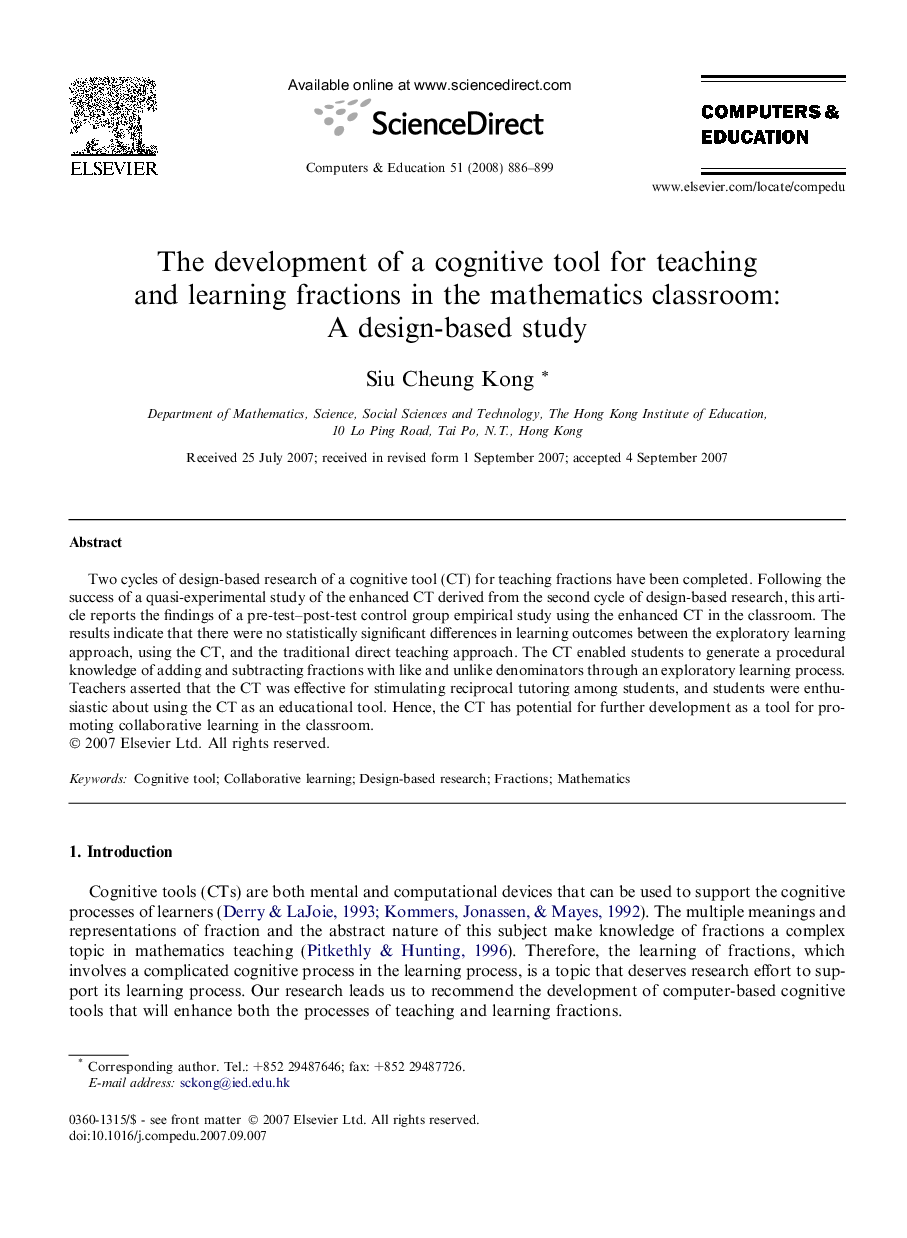| Article ID | Journal | Published Year | Pages | File Type |
|---|---|---|---|---|
| 349774 | Computers & Education | 2008 | 14 Pages |
Two cycles of design-based research of a cognitive tool (CT) for teaching fractions have been completed. Following the success of a quasi-experimental study of the enhanced CT derived from the second cycle of design-based research, this article reports the findings of a pre-test–post-test control group empirical study using the enhanced CT in the classroom. The results indicate that there were no statistically significant differences in learning outcomes between the exploratory learning approach, using the CT, and the traditional direct teaching approach. The CT enabled students to generate a procedural knowledge of adding and subtracting fractions with like and unlike denominators through an exploratory learning process. Teachers asserted that the CT was effective for stimulating reciprocal tutoring among students, and students were enthusiastic about using the CT as an educational tool. Hence, the CT has potential for further development as a tool for promoting collaborative learning in the classroom.
